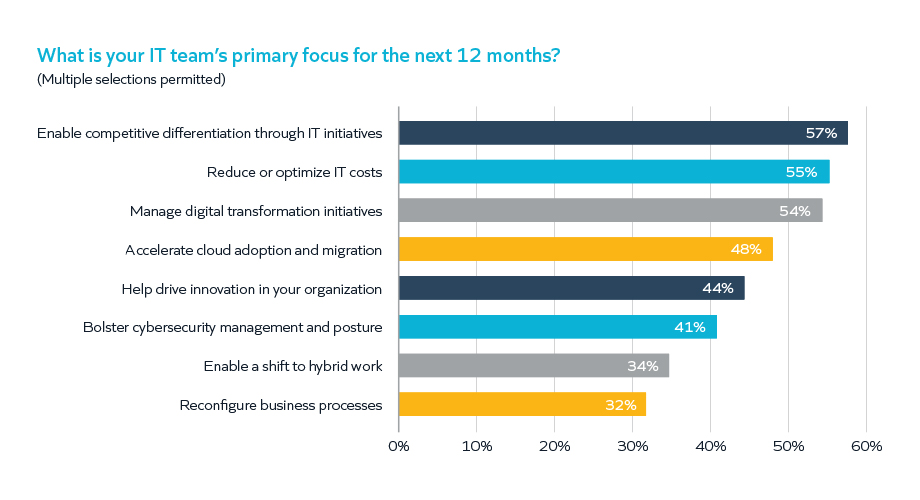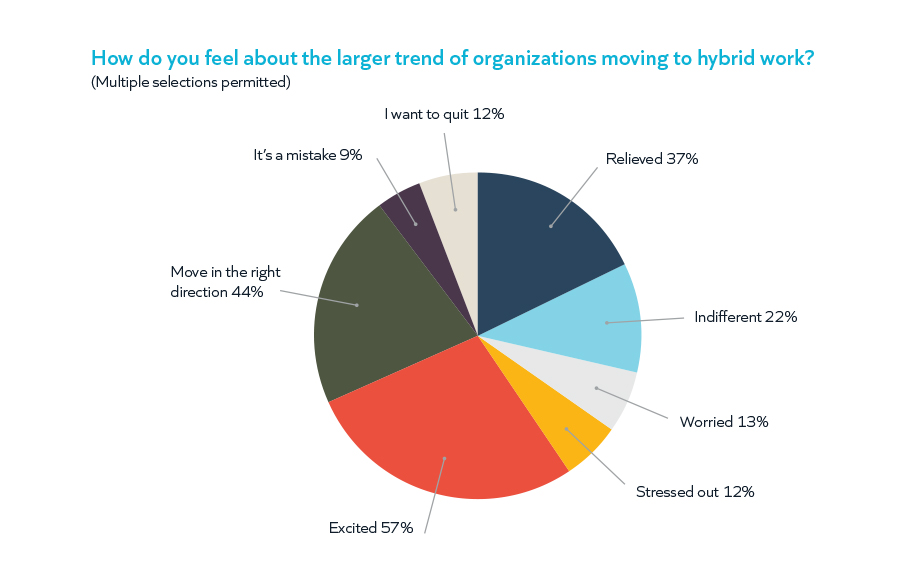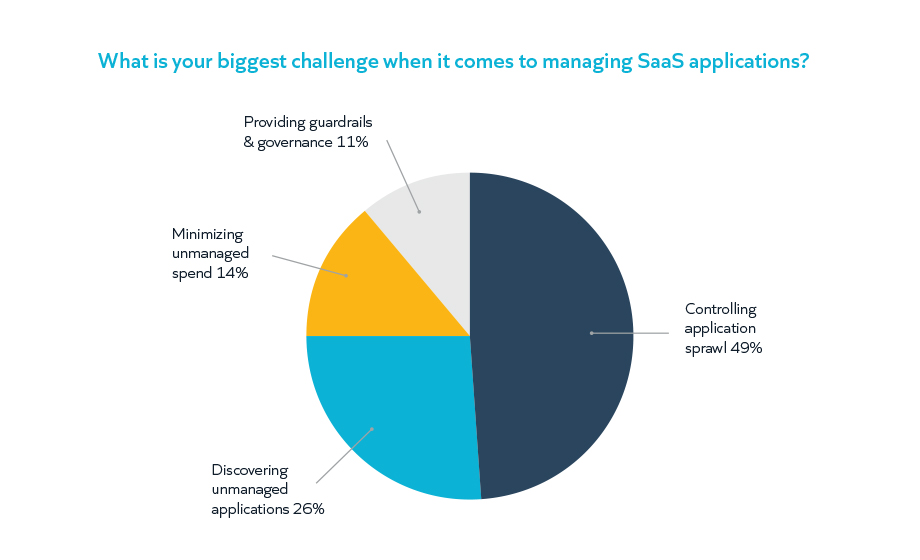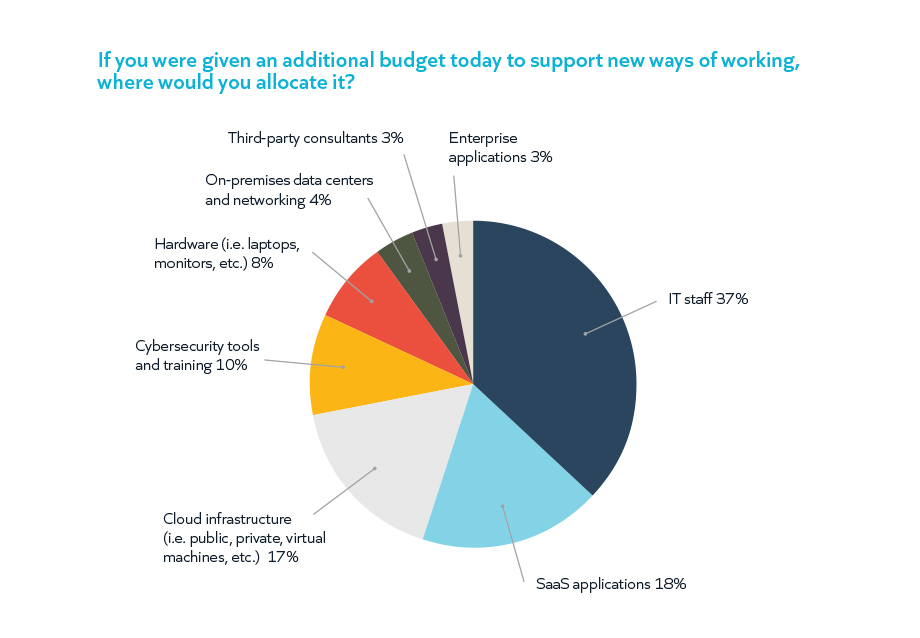Study: Hybrid Work Is Here to Stay, Bringing Its Own Mix of Complexities

2020 heralded the era of remote working, with companies empowering their employees to work in their homes. Cloud usage skyrocketed, and as Microsoft CEO said, “We’ve seen two years’ worth of digital transformation in two months”. The appetite to embrace cloud services has increased across the world, but now 18 months later, organizations are having to rein in their cloud spend and better understand the IT investments made in 2020. This is a huge challenge, but additionally, IT leaders have another essential task on their plates – how to embrace hybrid work.
Our survey polled 400 IT leaders to determine the current state of hybrid work and technologies and found that more than 92% were moving or had already moved to a hybrid work mode. This statistic isn’t surprising as many companies have begun opening their doors again for in-office work, but many employees aren’t ready to be back in office.
While the majority of IT leaders have moved or are already moving to hybrid work, only 34% indicated that the shift to hybrid work is the IT team’s primary focus for the next 12 months. Most leaders noted that reducing/optimizing IT costs (55%) and enabling competitive differentiation through IT initiatives (57%) as their main priorities – so if hybrid work is top of mind for organizations, why is it not a top focus for IT leaders?

Hybrid vs remote work: the difference is complexity
First, it’s important to recognize that remote and hybrid work bring their own set of complexities. While they have similarities – both bringing the challenges of managing application sprawl, shadow IT and managing costs – they are not the same.
Hybrid work requires managing requirements for both a remote and a physical environment. A hybrid work model must adjust to the ebb and flow of employees who may pivot back and forth, creating a similar technology experience regardless of location. Troubleshooting network constraints at company headquarters while also solving connectivity issues for an employee at home are the reality of hybrid work. For remote-only work, the variables stay largely the same.
But at this stage, we are not sure what the average hybrid work experience will look like. Every organization has its own unique needs, and as we saw in the survey, many IT leaders are still dealing with some lingering effects of 2020 decisions. But hybrid is a priority, and the majority of IT leaders are optimistic about the future of hybrid work, with 57% saying they were excited and 44% indicating it was a move in the right direction. Additionally, IT leaders noted feeling:

SaaS sprawl is (and will likely remain) concerning
According to our survey, IT leaders believe the most challenging aspects of supporting or transitioning to hybrid work are controlling costs (18%) and reining in unseen application use (16%) — makes sense considering the number of applications organizations are running. Most organizations surveyed are running 100 to 1000 SaaS applications across their network, and 73% of IT leaders indicated that this is an increase over the last 12 months. With SaaS continuing to gain importance, it is no wonder that one of the biggest challenges for SaaS is controlling sprawl. Discovering unmanaged SaaS applications remains a priority and will likely be a priority for many years to come.

When asked, IT leaders named Microsoft 365, Google Workspace and Zoom as the most impactful applications used by their organizations. Video conferencing was ranked as the top type of tool organizations relied on the most in the last year (32%), confirming Zoom’s place among most impactful applications. Other tools organizations relied on included:
- Cloud infrastructure (i.e. Microsoft Azure, AWS, Google Cloud, etc.) (23%)
- Office suites (i.e. Office365, Gsuite, Dropbox Paper, etc.) (11%)
- Specialty software (i.e. Salesforce, Adobe, etc.) (11%)
Surprisingly, collaboration applications (i.e. Slack, Teams, Dropbox, etc.) were on the lower end of tools heavily leaned on in the past year (9%). Considering the top three most used applications include many of the features of collaboration applications (such as chat, file sharing, etc.), collaboration-focused applications may have ranked lower because their function was already covered by the leading tools.
2021 IT spending will increase
With increased complexity comes increased costs. More than 83% of IT leaders expect additional funds to support and implement new ways of working. If given an additional budget today to support new ways of working, the majority of IT leaders (37%) believe it should be invested in IT staff while other leaders believed that budget should be spent on:
- SaaS applications (18%)
- Cloud infrastructure (i.e. public, private, virtual machines, etc.) (17%)
- Cybersecurity tools and training (10%)

IT leaders (34%) expect that hybrid work will increase employee access and consumption of IT resources. While SaaS spending increased in 2020, according to IT leaders surveyed, this is only the beginning of more significant spending increases we will see as hybrid work becomes the norm.
As we continue to navigate the pandemic and embrace the hybrid work model, over the coming months organizations will need to think more critically about how they can support this new reality. In this new era of hybrid work, vendors like Microsoft, are developing solutions for organizations to offer greater flexibility to the hybrid workforce. See how IT Asset Management teams can prepare for this transformation and beyond.